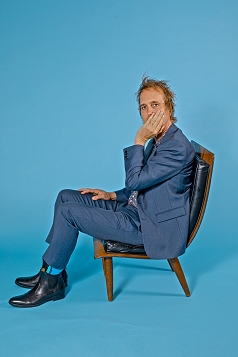EQ
Let It Bleed : Recording In A Small Mexico City Studio Helped Chuck Prophet Get Aggressive
When San Francisco guitarist and singer Chuck Prophet set out to record ¡Let Freedom Ring! [Yep Roc] last spring, he assumed a change of environment, specifically Mexico City, would inspire him and add some manic energy to the album. He didn’t count on periodic power outages ruining takes at Estudio 19, the oldschool studio he picked to lay down tracks, nor a 6.4 earthquake shaking the building’s foundations. And nobody expects a pandemic.
“What I didn’t predict was that the swine flu scare would start three days after we arrived,” Prophet says. “The CNN paranoia, if you crank that stuff up to 11, makes everybody start to feel a little off. People got itchy. We put on blue masks and had a driver take us to the studio.”
Also, according to producer Greg Leisz, Prophet didn’t remember how small (roughly 12 feet by 20 feet) the high-ceiling main room was at Estudio 19. Reacting to his last record, Soap and Water, which included sections with arranged strings and a children’s choir, Prophet wanted to dial things down. The former member of ’80s L.A. cowpunk band Green on Red wanted a light touch and a raw performance. Normally, tight spaces complicate the situation. But with a few deft arrangements of equipment and a willingness to use bleed and leakage to their advantage, the musicians and engineers working on ¡Let Freedom Ring! made it sound both spacious and fully charged.
“People think isolation is the way to go,” says Jason Carmer, who engineered the album. “But getting the bleed reinforces the stereo imagery. You can hear the guitars from the perspectives of all the mics in the room. I find that the bleed gives you great depth of field.”
The whole album was recorded in one general formation in the main room to help capture a live feel. While there were some guitar overdubs later, and pedal steel and fiddle tracks were laid down separately to add extra color and tone to songs like “What Can a Mother Do,” the aim was to capture raw performances.
Electrified opener “Sonny Liston’s Blues” was a completely live take. Chuck occupied the right corner. His guitar, usually a Squier Telecaster, which he favors for its simplicity, was plugged into a pedal board and run into an amp, usually a Fender Princeton Reverb or a Vox AC30, which stayed in the main room and was recorded through a RCA 77DX ribbon mic. An Ibanez AD-80 analog delay was sometimes plugged in to provide a vintage slapback feel on some of Prophet’s solos. Baffles were then set up to cover his Neumann U 47 vocal mic (run through a GML preamp with a Urei LA-3A compressor), chosen because the rich, warm sound worked well with Prophet’s Tom Petty-esque voice.
“Both the mic and Chuck’s voice have character, so I wanted to capture that,” says Carmer. “It helped deliver the smashing, classic vocals of old records that we were looking for.”
Drummer Ernest “Boom” Carter, who played on Springsteen’s “Born to Run,” set up a borrowed ’60s Gretsch drum kit across the room, miked with a mono U 87 placed between the beater and snare that “pulled it all in,” according to Carmer, and added a spaciousness to the recording. Guitarist Tom Ayres, bassist Rusty Miller, and Leisz, who occasionally added another guitar line, squeezed in the middle of the room. Their amps were placed in the machine room or lounge, with doors left slightly ajar to capture some bleed. Everything was tracked according to its orientation, says Carmer, which meant they could capture the reflection of the space.
To accentuate the live energy in the room, lots of compression was added to the guitar tracks via Neve 1073s and UA 1176s. It really pricked up the guitar lines snaking through the rave-up “Where the Hell is Henry?”
“The general modus operandi was to go for it and be aggressive,” says Carmer. “[Compression] helped give it an authentic feel but also trash it up a bit.”
Prophet and others half-jokingly referred to the studio as a state-of-theart room from 1957, and while there’s some truth to that, the studio’s cache of vintage gear and mics added a lot of character. A vintage Ampeg SVT added powerful reverb, and Carmer especially enjoyed using Pultec EQP- 1As on kick, snare, toms, rooms, guitars, and bass. More importantly, the somewhat cramped space—from the overflowing studio to the courtyard where they’d eat tacos for lunch—gave them a sense of unity of purpose.
“There was so much chaos outside the studio that when we got in there and the power was on and we could lay down a track, there was a certain teenage energy,” Prophet says. “It reminded me of being in the studio with my first band.”


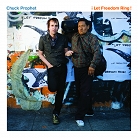



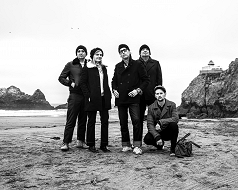
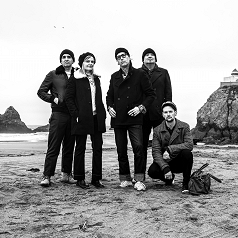

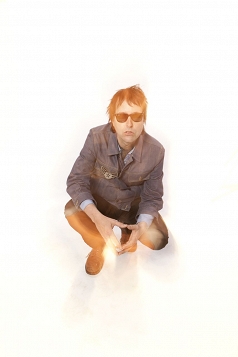
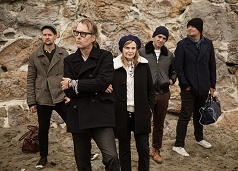

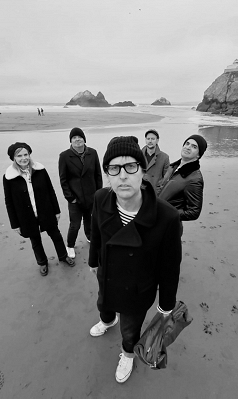
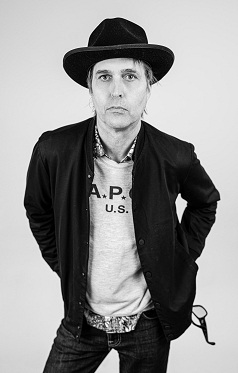
3_238_159auto_s_c1.jpeg)
